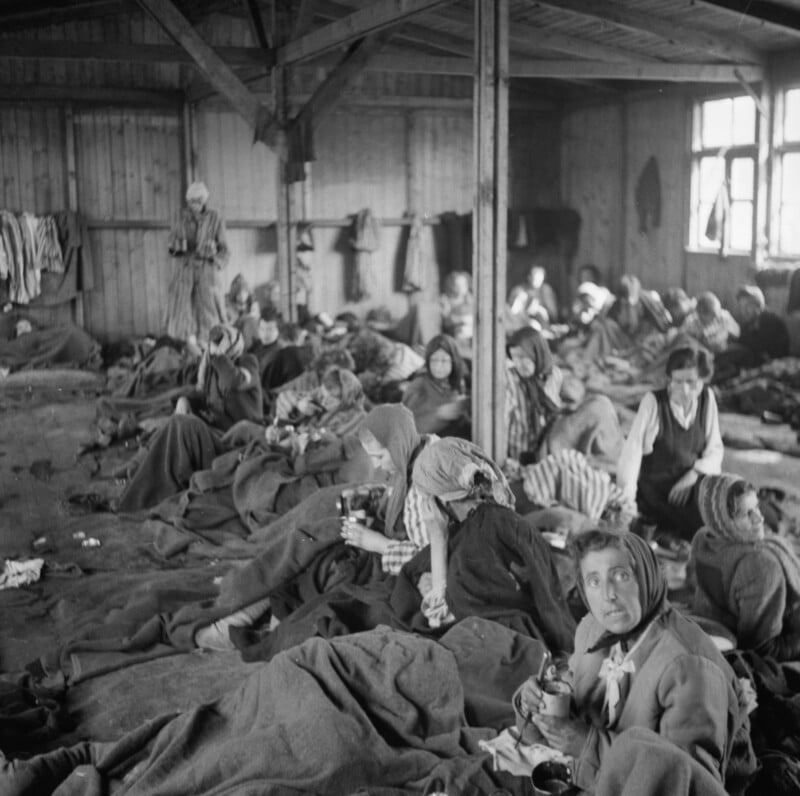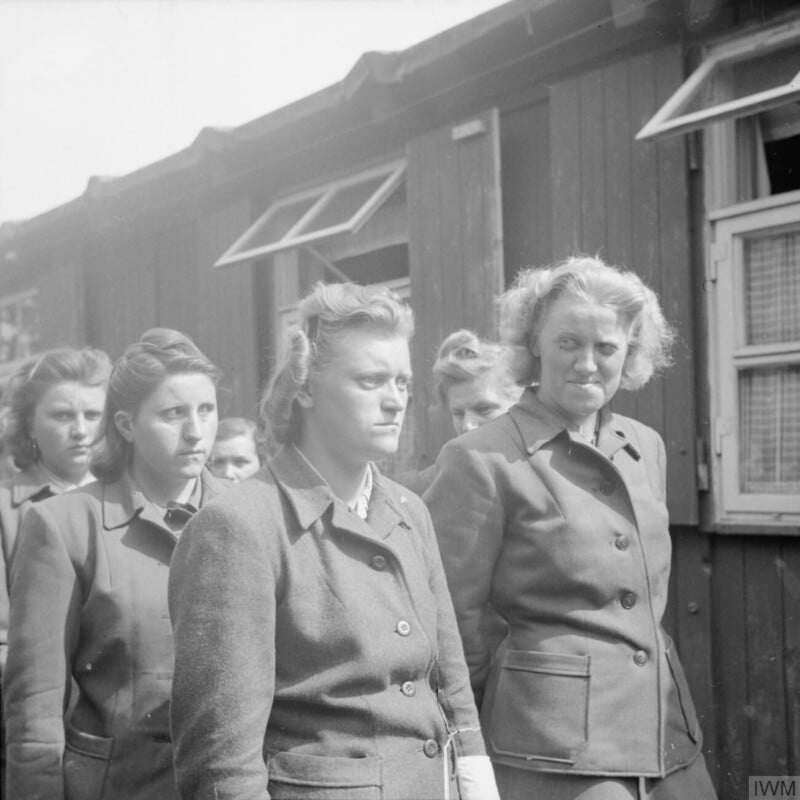Documentary Tells Story of Army Photographers Who Captured Nazi Camp Liberation on 35mm Film
![]()
A new documentary uses the 35mm film footage that two army photographers captured of the liberation of Bergen-Belsen concentration camp during World War II.
What They Found, the first documentary by 1917 director Sam Mendes, tells the story of British soldier-cameraman Sergeant Mike Lewis and Sergeant Bill Lawrie.
On April 15, 1945, Lewis and Lawrie, members of the Army Film and Photographic Unit, were sent to photograph and record what they were told was a camp with an outbreak of typhus in Northern Germany, named Bergen-Belsen.

The Nazi concentration camp was filled with political prisoners and criminals being handed over to the British under a truce agreed with German officers.
Accompanied by British troops, Lewis and Lawrie were unprepared for the scenes that awaited them upon entering Bergen-Belsen.
They arrived to find nearly 60,000 half-starved prisoners and another 10,000 corpses lying around the camp unburied. By then 50,000 others had already died there.
For ten days, it was the task of Lewis and Lawrie to capture the harrowing reality of the concentration camp on film.
The army photographers’ silent black-and-white footage of the liberation of Bergen-Belsen — shot on 35mm film — revealed the horrors of the Nazi concentration camp to the wider world for the first time.

The landmark footage was deposited with the Imperial War Museum (IWM) by the British War Office in the 1950s. In the 1980s, the IWM undertook a series of oral history interviews with Second World War cameramen, including the audio testimonies with Lewis and Lawrie.
According to a report by The Radio Times, Lewis described what he saw at Bergen-Belsen as “a different planet, a different Earth — a hell” during these interviews with IWM.
“I knew the camera had pushed the reality of the sights away from me and protected me from it,” Lawrie said in 1985. “When I left Belsen, I wanted to forget. After 40 years, I know I will never forget, that the hell I saw will never leave me.”

In What They Found, Mendes uses only the silent footage shot by Lewis and Lawrie, accompanied by archive oral interviews with the two soldier-photographers recorded in the 1980s, to retell the story of the liberation of Bergen-Belsen concentration camp.
In a four-star review of What They Found, The Guardian’s Jack Seale describes the documentary as “TV that could alter your whole world view.”
What They Found has been released by the BBC to mark the 80th anniversary of the liberation of Bergen-Belsen.
The Horrors of Bergen-Belsen Concentration Camp
It is estimated that over 90,000 people lost their lives at Bergen-Belsen. This included Anne Frank, the teenage diarist who is now remembered as one of the most famous victims of the Holocaust, who was transported from Auschwitz to Bergen-Belsen. Frank contracted Typhus at the camp and died there in February 1945.
Bergen-Belsen began as a camp for Allied prisoners of war. After it was turned over to the SS, it became a Nazi concentration camp in 1943. Beginning in fall of 1944, the Nazis deported tens of thousands of Jewish prisoners from concentration camps in Central and Eastern Europe to Bergen-Belsen.
As Bergen-Belsen’s population rose from roughly 7,300 in July 1944 to 41,000 in March 1945, living conditions rapidly deteriorated. Overcrowding, lack of food, and poor sanitary conditions caused outbreaks of typhus, tuberculosis, typhoid fever, and dysentery led to tens of thousands of prisoners’ deaths.
“In Auschwitz, people were murdered in the most sophisticated manner; in Belsen, they simply perished,” Holocaust survivor Anita Lasker-Wallfisch later recalled, according to The Smithsonian.
“We sat about and waited and watched each other deteriorate. There were no gas chambers there, no need for gas chambers — you just died of disease, of starvation.”

After several days of cease-fire talks between the British Army and the Wehrmacht, British forces entered Bergen-Belsen concentration camp on 15 April 1945 without encountering resistance. Just before their arrival, the SS attempted to erase evidence of their atrocities by destroying the camp’s administrative records.
Nothing could have prepared the British soldiers for the nightmare they stepped into. Although the British Army and various relief organizations swiftly arranged for medical aid, another 14,000 liberated prisoners had died of the effects of their imprisonment by June 1945 alone.
When the British soldiers took over the camp, they disarmed the remaining SS personnel and placed them under arrest. In the following days, both male and female SS members had to dig mass graves in the grounds of the former camp and bury tens of thousands of bodies.
The British troops were accompanied by military photographers and cameramen, such as Lewis and Lawrie, whose job it was to document the conditions in Bergen-Belsen and the emergency aid measures initiated there. The hundreds of photos, film reels, and notes they took from the day of liberation through June 1945 give some indication of the extent of the crimes committed in Bergen-Belsen and had a lasting impact on the memory of the Nazi concentration camps worldwide.